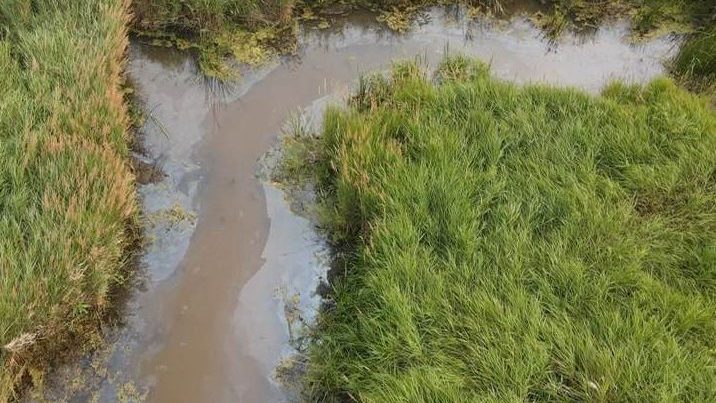
In a pair of Aug. 9 tweets, the Minnesota Pollution Control Agency (MPCA) shared its summary of the harm caused (so far) by Enbridge as crews drilled beneath our waterways to construct the Line 3 tar sands oil pipeline. Below, we offer some context for these numbers, and why Minnesotans should be alarmed.
First, let’s clear up some confusion about the number of water crossings where Enbridge is using horizontal directional drilling (HDD) to install Line 3:
| 21 | The number of individual waterway crossings where HDD is being used |
| 19 | The number of distinct HDD crossings (at two locations, Enbridge is drilling under two waterways at once) |
| 15 | The number of rivers directly impacted by HDD (Enbridge is drilling beneath the Mississippi and Clearwater Rivers in two different places and the Shell River in three separate locations) |
HDD locations can be viewed on Watch the Line’s project map.
The MPCA’s tweets offer a count of “inadvertent releases of drilling fluid” caused by Enbridge during Line 3 horizontal drilling. Here are some more numbers:
| 28 | The number of unique spill incidents (1 + 13 + 14) |
| 12 | The number of HDD crossings where Enbridge polluted the water with drilling fluid |
| 63% | The percentage of HDD crossings where Enbridge spilled drilling fluid into the water or wetlands (12 out of 19); Conversely, this means only 37% of HDD operations were done without incident |
| 80% | The percentage of HDD-impacted rivers into which Enbridge released drilling fluid (12 out of 15) |
It is unclear what the MPCA intends to do about any of this. Even the term “inadvertent releases” shrouds accountability. Was Enbridge working too fast? Is it easier to work faster and have these spills when there’s no significant financial cost for the spill? Per the MPCA’s tweet, many of these spills are in violation of the permits that agency granted Enbridge. How many violations must occur before the government halts construction to investigate possible negligence? Is this incident count informed only by what Enbridge has reported? How can we be assured that there haven’t been additional spills?
Let’s remember how the MPCA defines its purpose:
The Minnesota Pollution Control Agency is a state agency committed to ensuring that every Minnesotan has healthy air, sustainable lands, clean water, and a better climate. Through the authority of state and federal statutes and guidelines, the Agency focuses on preventing and reducing the pollution of air, land, and water, and leads Minnesota’s efforts to protect against the devastating effects of climate change.
Do you think they’re living up to this commitment to the people of Minnesota?
Meanwhile, since regulators do not appear to be actively monitoring the situations or taking any action, a grassroots water sampling and testing effort—led by water scientists and organized by water protectors and allies—was assembled in response to the numerous frac-outs. Results are pending.
